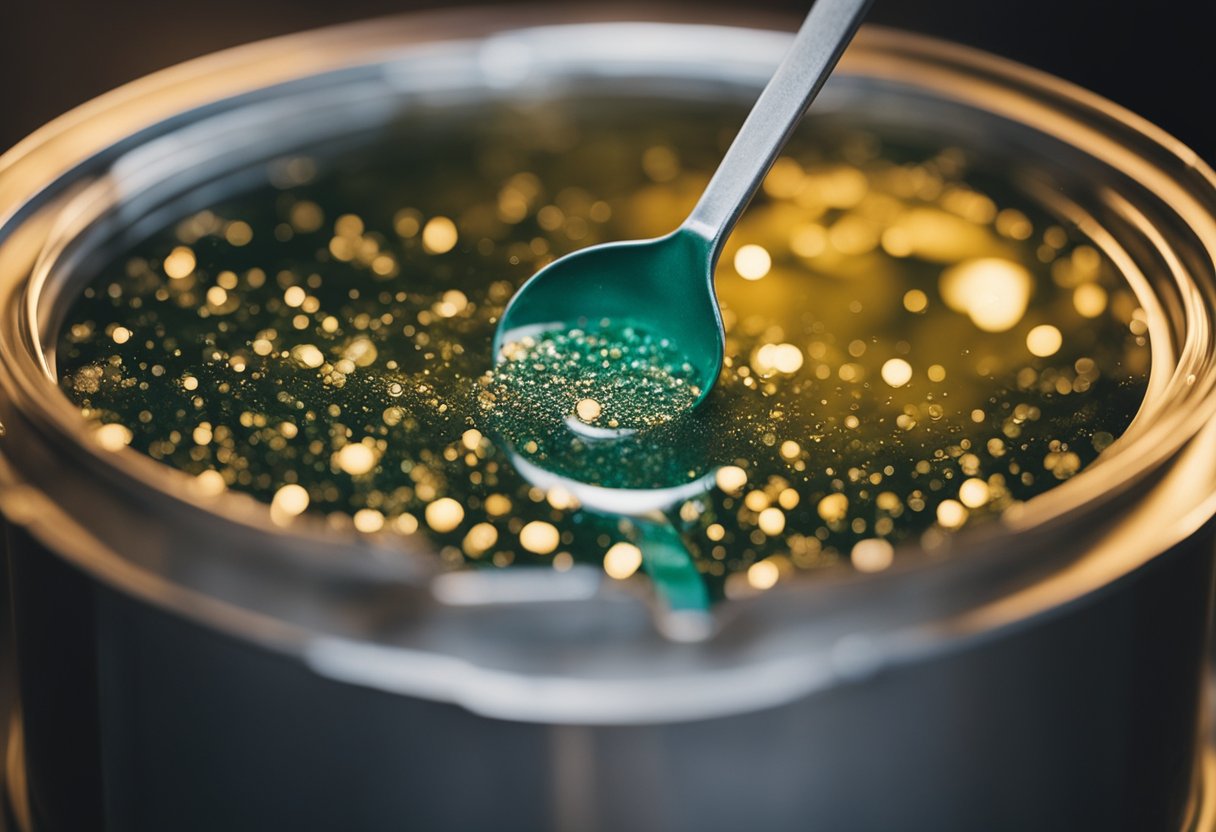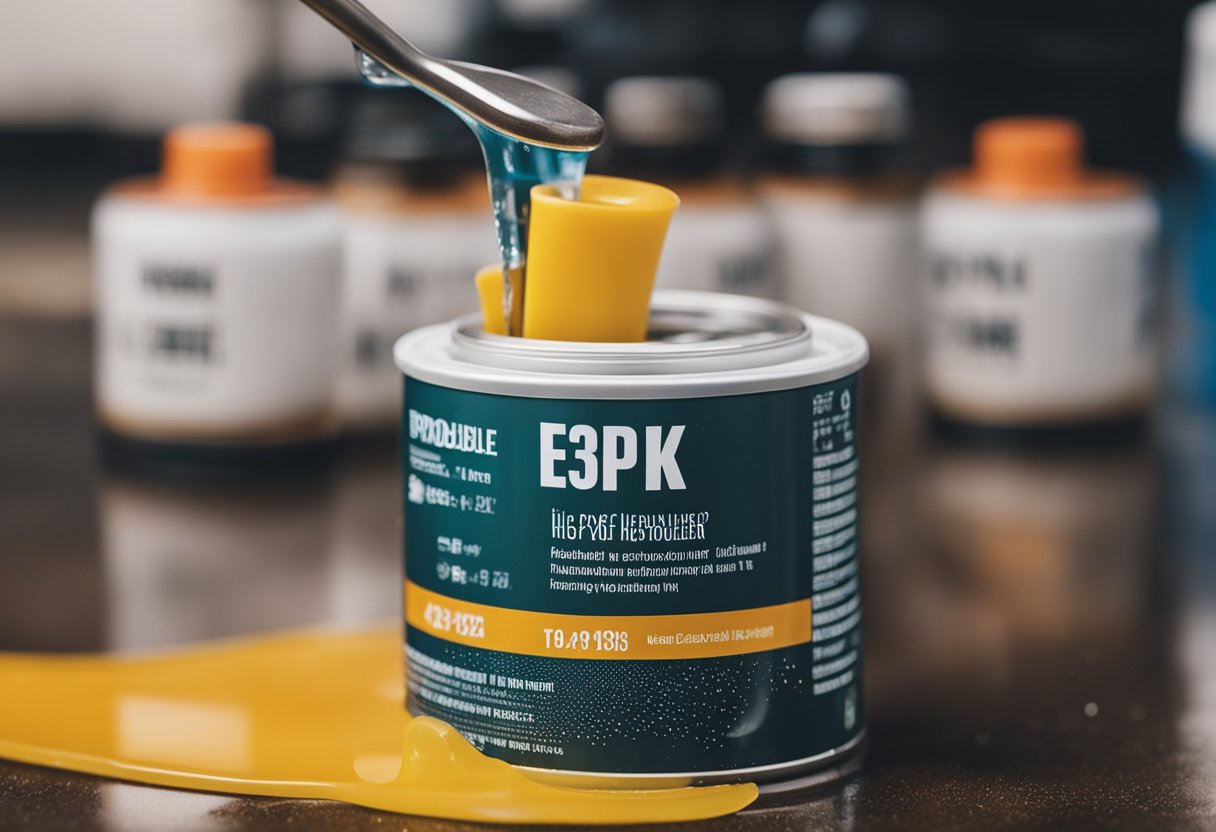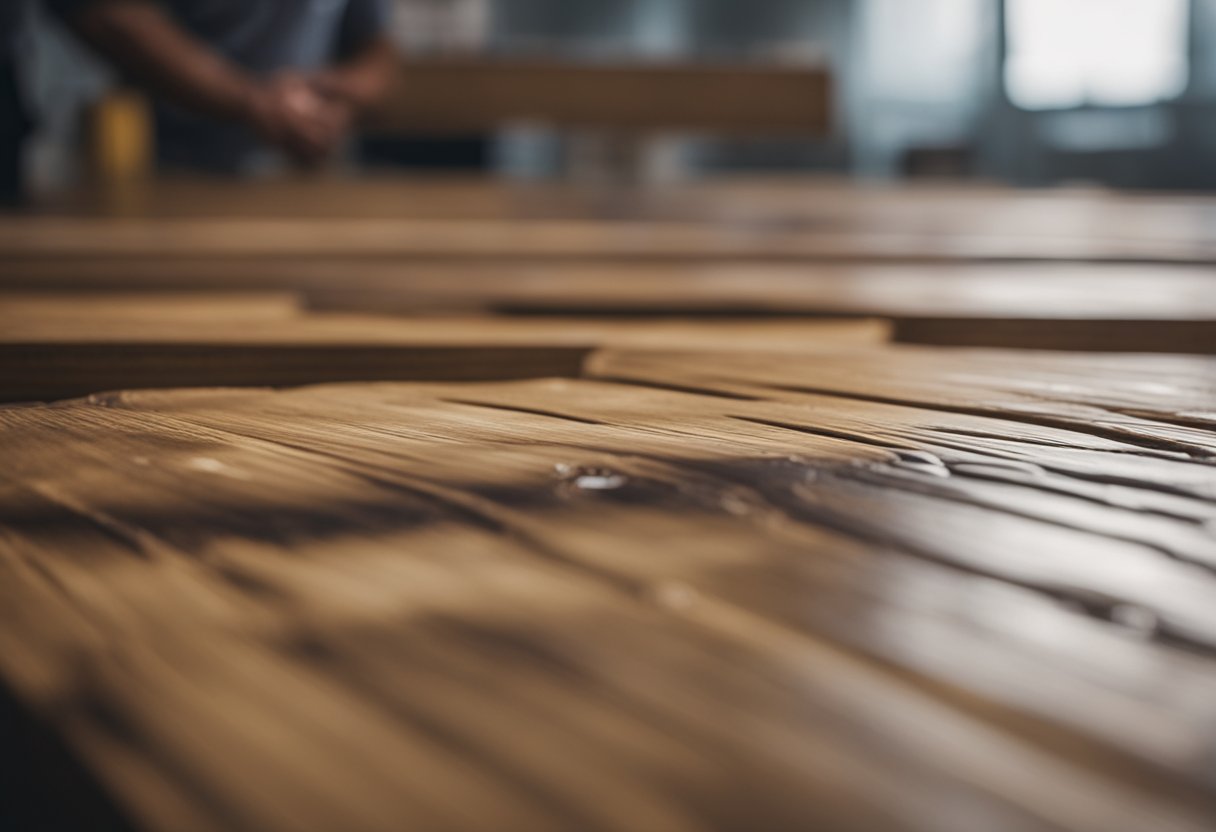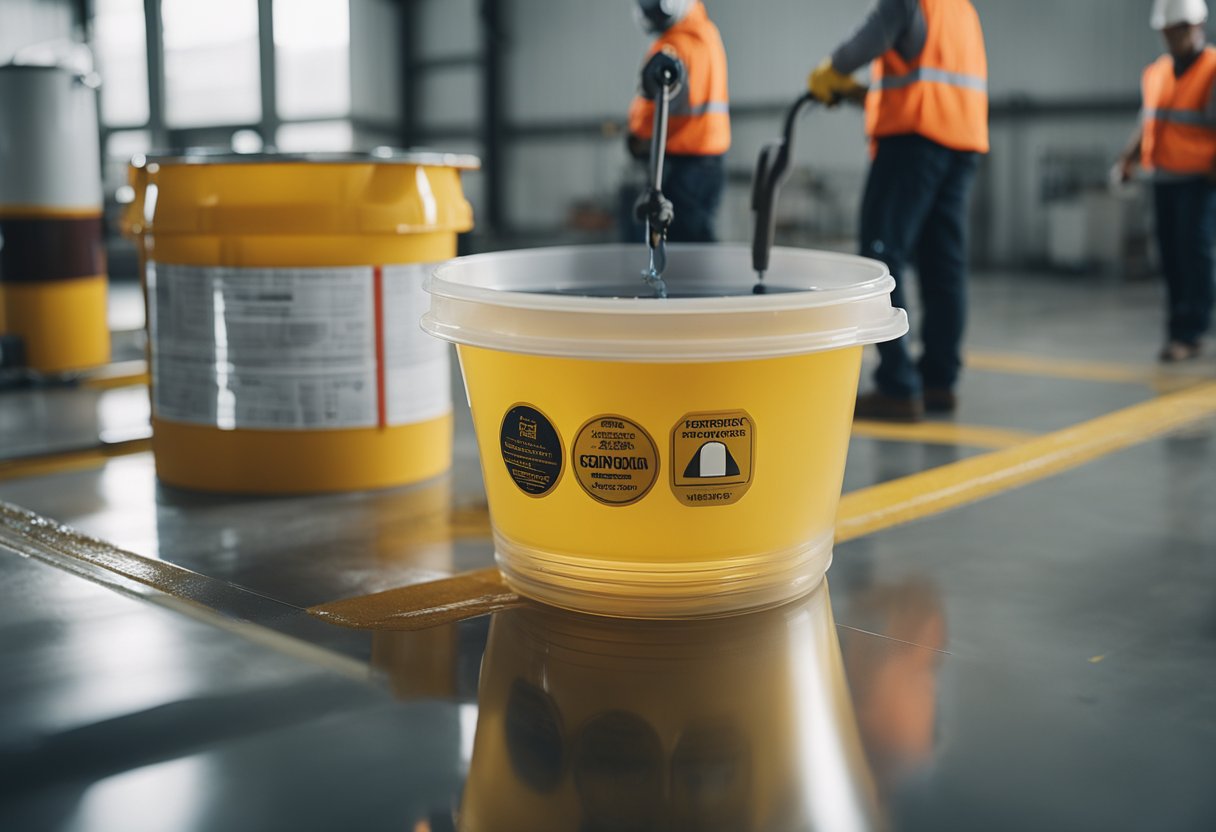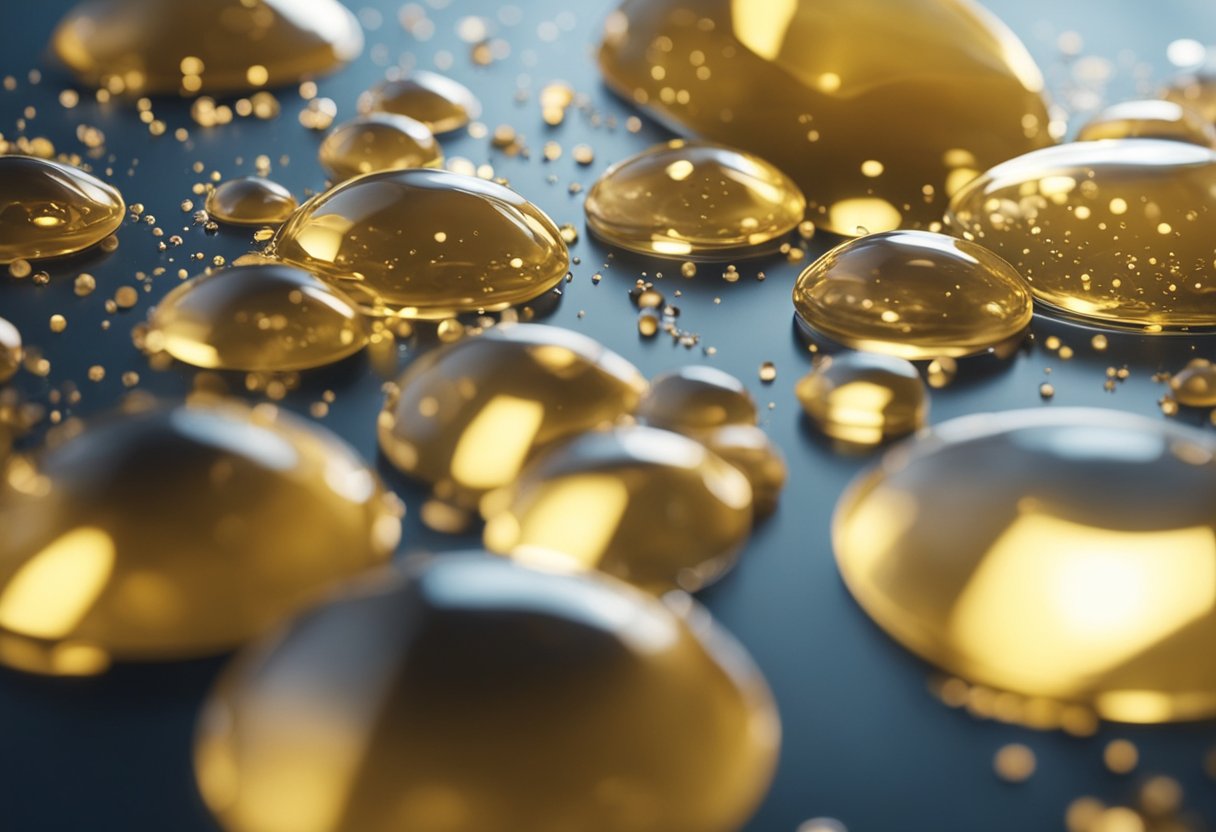As a woodworking enthusiast, I have worked with epoxy resin for many years and learned the hard way that using too much hardener can cause serious problems. Epoxy resin is made up of two components: resin and hardener. The two components are mixed together in a specific ratio to create a chemical reaction that hardens the mixture into a durable and long-lasting material.
Understanding the fundamentals of epoxy resin and hardener is crucial when working with these materials. The ratio of resin to hardener is critical and should be followed precisely as indicated by the manufacturer. Using too much hardener can cause the mixture to cure too quickly, leading to brittle and weak results, while using too little hardener can result in a sticky and soft finish.
Key Takeaways
- Using too much hardener in epoxy resin can cause the mixture to cure too quickly, resulting in brittle and weak results.
- The ratio of resin to hardener is critical and should be followed precisely as indicated by the manufacturer.
- To avoid problems when working with epoxy resin, it is important to understand the fundamentals of the materials and follow the manufacturer’s instructions carefully.
Understanding Epoxy Resin and Hardener
https://www.youtube.com/watch?v=FkZhyjGRsN4&embed=true
As a chemist, I have a deep understanding of the fundamental properties of epoxy resin and hardener. Epoxy resin is a two-part system consisting of a part A resin and a part B hardener. These two parts must be mixed together in the correct ratio to create a chemical reaction that results in a cured epoxy.
The mixing ratio of epoxy resin and hardener is critical to the performance of the cured product. Adding too much or too little hardener will affect the curing time and thoroughness of the cure. It is important to follow the manufacturer’s recommended mixing ratio to ensure the best results.
When mixing epoxy resin and hardener, it is important to use the correct tools and techniques. Mixing should be done slowly and thoroughly to ensure that the two parts are evenly distributed. Using a mixing tool such as a stir stick or a drill with a mixing attachment can help to ensure thorough mixing.
If too much hardener is added to the epoxy resin, the mixture may become runny or sticky, which can result in an improperly cured product. This is because the chemical reaction between the resin and hardener is accelerated, causing the mixture to heat up too quickly and potentially flash cure before it can be used.
In summary, understanding the fundamentals of epoxy resin and hardener is key to achieving a successful cure. By following the manufacturer’s recommended mixing ratio and using proper mixing techniques, you can ensure that your epoxy project is a success.
The Importance of Correct Ratio
https://www.youtube.com/watch?v=0J37xsrL36E&embed=true
As someone who has worked with epoxy resin, I understand the temptation to add more hardener than recommended to speed up the curing process. However, it’s important to remember that the ratio of resin to hardener is crucial to the final outcome of the project.
The mixing ratio of epoxy resin and hardener varies from product to product, but it’s important to follow the manufacturer’s instructions carefully. Most epoxy resins have a 1:1 ratio of resin to hardener by volume, which means that equal amounts of each component are needed for the chemical reaction to occur properly.
Measuring the components accurately is essential to achieving the correct ratio. While some products may measure by weight, most measure by volume. It’s important to use the correct measuring tools, such as graduated cups or syringes, to ensure that the ratio is correct.
Adding too much hardener to the mix can lead to a variety of problems. If too much hardener is added, the curing process will slow down, leading to an improperly hardened and non-functioning product. On the other hand, if too little hardener is added, the resin will not cure properly, resulting in a sticky and uncured surface.
In conclusion, the ratio of resin to hardener is a critical factor in the success of an epoxy resin project. By following the manufacturer’s instructions carefully and measuring the components accurately, you can ensure that the ratio is correct and that your project will turn out as expected.
Mixing Process and Common Mistakes
https://www.youtube.com/watch?v=Dqh4xRQNPxY&embed=true
Mixing epoxy resin involves combining two components, the resin and the hardener, in precise ratios. The ratio of resin to hardener varies depending on the type of epoxy and the manufacturer’s instructions. It is important to follow the mixing instructions carefully to achieve the desired consistency and texture of the mixture.
One common mistake when mixing epoxy resin is to add too much hardener. This can result in an inconsistent mixture that is either runny or sticky, and may not cure properly. Adding too little hardener can also lead to problems, such as the mixture not hardening at all, or taking too long to cure.
To avoid these mistakes, it is important to measure the resin and hardener accurately using a scale or measuring cup. Mixing by weight is generally more accurate than mixing by volume. It is also important to mix the components thoroughly, scraping the sides and bottom of the mixing container to ensure even distribution.
When mixing small batches of epoxy, it can be more difficult to achieve the correct ratio of resin to hardener. In these cases, it may be helpful to use a syringe or pipette to measure the hardener more precisely.
In summary, mixing epoxy resin requires careful attention to detail and precise measurement of the components. Common mistakes include adding too much or too little hardener, and not mixing the components thoroughly. By following the manufacturer’s instructions and taking care to measure and mix the components accurately, you can avoid these mistakes and achieve a consistent, high-quality mixture.
Curing Process and Potential Problems
https://www.youtube.com/watch?v=iPDr0Qr9Y4Y&embed=true
As someone who has worked with epoxy resin, I know that curing is an essential process that determines the final quality of the product. Curing is a chemical reaction that occurs when the resin and hardener are mixed in the correct ratio. The curing process can be affected by several factors, including the curing time, temperature, mixing ratio, and the amount of hardener used.
When too much hardener is added to the epoxy resin mixture, it can lead to several problems. One of the most common problems is sticky or tacky resin. This occurs when the resin does not cure properly and remains sticky to the touch. Another problem is runny or thin resin, which can result in soft spots in the finished product.
To avoid these problems, it is essential to follow the manufacturer’s instructions and use the correct mixing ratio. Adding too much hardener can also accelerate the curing process, making it difficult to work with the resin. On the other hand, adding too little hardener can slow down the curing process, resulting in an incomplete cure.
It is also important to note that the curing time can vary depending on the temperature and humidity levels. Higher temperatures can speed up the curing process, while lower temperatures can slow it down. It is essential to check the manufacturer’s instructions for the recommended curing time and temperature.
In conclusion, the curing process is crucial to the final quality of the epoxy resin product. Adding too much hardener to the mixture can lead to several problems, including sticky or tacky resin and runny or thin resin. It is important to follow the manufacturer’s instructions and use the correct mixing ratio to avoid these issues.
Impact of Temperature and Humidity
https://www.youtube.com/watch?v=AglQrLHLGjY&embed=true
When working with epoxy, it is important to understand how temperature and humidity can affect the curing process. Temperature plays a crucial role in the curing process of epoxy. The curing process is accelerated at higher temperatures and slowed down at lower temperatures. The ideal temperature range for curing epoxy is between 60°F and 90°F. If the temperature is below 60°F, the epoxy may not cure properly, and if the temperature is above 90°F, the curing process may be too fast, leading to structural issues.
Humidity can also have an impact on the curing process of epoxy. When the air is humid, the moisture in the air can react with the epoxy, causing it to cure too quickly or not at all. If the humidity is too high, the epoxy may not cure properly and will remain sticky or tacky to the touch. On the other hand, if the humidity is too low, the epoxy may cure too quickly, leading to structural issues.
To ensure that the epoxy cures properly, it is important to maintain a consistent temperature and humidity level throughout the curing process. This can be achieved by using a dehumidifier or air conditioner to control the humidity level and by monitoring the ambient temperature using a thermometer.
In conclusion, when working with epoxy, it is important to consider the impact of temperature and humidity on the curing process. By maintaining a consistent temperature and humidity level, you can ensure that the epoxy cures properly and achieves the desired results.
Troubleshooting and Fixes
If you notice that your epoxy resin is not hardening properly, there are a few things you can do to troubleshoot and fix the issue. Here are some common problems and their solutions:
Bubbles
Bubbles are a common problem when working with epoxy resin. To prevent bubbles, make sure to mix the resin and hardener slowly and thoroughly. You can also use a heat gun to remove any bubbles that do appear. Hold the heat gun about six inches away from the surface and move it back and forth until the bubbles disappear.
Sandpaper and Abrasion
If you notice that your epoxy resin has a rough or uneven surface, you can use sandpaper to smooth it out. Wet/dry sandpaper works best for this purpose. Start with a coarse grit and work your way up to a finer grit until the surface is smooth. You can also use an abrasive pad to remove any rough spots.
Fixes
If you have added too much hardener to your epoxy resin, it may not harden properly. You can fix this by adding more resin to the mixture. Make sure to mix the resin and hardener thoroughly and use the correct ratio. If your epoxy resin is still not hardening, you may need to remove it and start over.
Heat Gun
A heat gun can be used to remove bubbles from your epoxy resin. It can also be used to help the resin cure faster. Hold the heat gun about six inches away from the surface and move it back and forth until the bubbles disappear. Be careful not to overheat the resin, as this can cause it to crack or warp.
Air Bubbles
Air bubbles can be a problem when working with epoxy resin. To prevent air bubbles, make sure to mix the resin and hardener slowly and thoroughly. You can also use a vacuum chamber to remove any air bubbles that do appear.
Epoxy Problems
If you are having problems with your epoxy resin, there are a few things you can do to troubleshoot and fix the issue. Make sure to follow the manufacturer’s instructions carefully and use the correct ratio of resin and hardener. If your epoxy resin is not hardening properly, try adding more resin to the mixture or using a heat gun to help it cure faster. If all else fails, you may need to remove the resin and start over.
Crafting and Woodworking with Epoxy
As a craftsman and woodworker, I have found epoxy to be an essential material in my projects. Epoxy is a durable and versatile material that can be used to create a wide range of end products. It is particularly useful in creating fiberglass and glaze coat epoxy finishes.
When working with epoxy, it is important to ensure that the resin and hardener are mixed in the correct ratio. Adding too much hardener can cause the epoxy to cure too quickly and become brittle. On the other hand, adding too little hardener can result in a sticky and uncured finish.
To ensure the correct ratio, I use a digital scale to measure the weight of the resin and hardener. I always follow the manufacturer’s instructions and mix the two components thoroughly before applying them to my project.
One of the benefits of using epoxy in crafting and woodworking is its durability. It can withstand wear and tear over time, making it ideal for creating long-lasting pieces. Additionally, epoxy can be used to create a glossy and smooth finish that enhances the appearance of the final product.
When working with old wood, I have found that epoxy can also be used to fill in gaps and cracks. By filling in these imperfections, the epoxy can help to reinforce the wood and prevent further damage.
Overall, epoxy is a versatile and reliable material that can be used in a variety of crafting and woodworking projects. When used correctly, it can help to create durable and beautiful end products.
Safety Measures and Best Practices
As a writer who has worked with epoxy resins for several years, I understand the importance of safety measures and best practices when working with these materials. Manufacturers of epoxy resins provide guidelines for the pot life and open time of their products, which should be followed closely to avoid any safety hazards.
One of the most important safety measures when working with epoxy resins is to wear protective clothing, including gloves, goggles, and a respirator. This is especially important when working with large quantities of resin or when sanding or grinding cured epoxy. It is also important to ensure that the work area is well-ventilated to avoid inhaling any fumes.
In addition to protective clothing, it is important to follow the manufacturer’s guidelines for mixing the resin and hardener. Adding too much hardener can cause the mixture to become too hot, which can lead to a fire or explosion. On the other hand, adding too little hardener can result in the mixture not curing properly.
To avoid adding too much hardener, it is recommended to measure the resin and hardener by weight, not by volume. This ensures that the correct ratio of resin to hardener is achieved. It is also important to mix the resin and hardener thoroughly to ensure that they are evenly distributed.
Finally, it is important to dispose of any unused resin and hardener properly. Epoxy resins should not be poured down the drain or thrown in the trash. Instead, they should be disposed of at a hazardous waste facility.
By following these safety measures and best practices, you can ensure that you are working with epoxy resins safely and effectively.
Advanced Techniques and Additives
When it comes to epoxy resin, there are many advanced techniques and additives that can be used to achieve a variety of effects. These techniques and additives can help to improve the strength, durability, and appearance of the final product. Here are some of the most common techniques and additives that I use in my work:
Surface Preparation
One of the most important steps in working with epoxy resin is surface preparation. The surface must be clean, dry, and free of any contaminants such as dust, dirt, or grease. Any imperfections in the surface can affect the final product, so it is important to take the time to properly prepare the surface before applying the epoxy resin.
Formula
The formula for the epoxy resin is also crucial to achieving the desired result. The ratio of resin to hardener must be carefully measured and mixed in order to achieve the right consistency and curing time. Too much hardener can cause the resin to cure too quickly, resulting in a brittle and weak final product. Conversely, too little hardener can cause the resin to remain sticky and never fully cure.
Additives
There are many different additives that can be used to modify the properties of epoxy resin. For example, adding fillers such as wood flour or microbeads can help to thicken the resin and make it easier to sand or shape. Colorants can be added to create a wide range of colors and effects. Seal coats can be used to create a smooth, glossy finish. Mold surfaces can be used to create unique shapes and designs.
Overall, epoxy resin is a versatile and durable material that can be used in a variety of applications. By using the right techniques and additives, it is possible to achieve a wide range of effects and create truly unique and beautiful objects.
Frequently Asked Questions
What is the recommended mixing ratio of epoxy resin and hardener?
The recommended mixing ratio of epoxy resin and hardener varies depending on the brand and type of epoxy you are using. However, most epoxy manufacturers recommend a mixing ratio of 1:1 or 2:1 (resin to hardener). It is important to follow the manufacturer’s instructions carefully to ensure proper curing and avoid any issues.
How long should I wait for epoxy to cure?
The curing time for epoxy resin varies depending on several factors, including the type of epoxy, the mixing ratio, and the temperature and humidity of the environment. Most epoxy resins cure within 24 to 72 hours, but some may take longer. It is important to follow the manufacturer’s instructions for curing time and temperature to ensure a proper cure.
Why is my epoxy floor still sticky after 24 hours?
If your epoxy floor is still sticky after 24 hours, it may be due to several factors, including improper mixing, insufficient curing time, or too much moisture in the environment. It is important to follow the manufacturer’s instructions carefully and ensure that the surface is clean and dry before applying the epoxy.
Can I mix different brands of epoxy resin?
Mixing different brands of epoxy resin is not recommended, as different brands may have different curing times, mixing ratios, and chemical compositions. Mixing different brands of epoxy resin may result in improper curing, poor adhesion, or other issues.
What are the consequences of mixing epoxy with too much hardener?
Mixing epoxy with too much hardener can result in several issues, including improper curing, a sticky or tacky surface, and reduced strength and durability. It is important to follow the manufacturer’s instructions carefully and measure the epoxy and hardener precisely to ensure proper curing and avoid any issues.
How can I tell if my epoxy hardener is bad?
If your epoxy hardener is bad, it may appear cloudy or discolored, have a strong odor, or fail to cure properly. It is important to store epoxy and hardener in a cool, dry place and use them within their recommended shelf life to avoid any issues.

Hi, I’m Sal Muller of Tooltrip.com. My DIY experience led me to understand essential power tools for home projects. Tooltrip.com guides enthusiasts and professionals in choosing right tools for any job. I provide concise top tool reviews for easier, efficient DIY.

